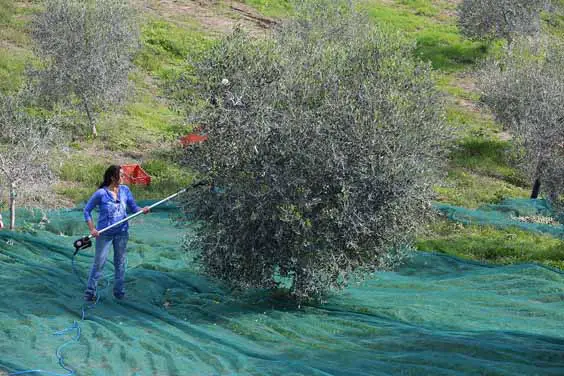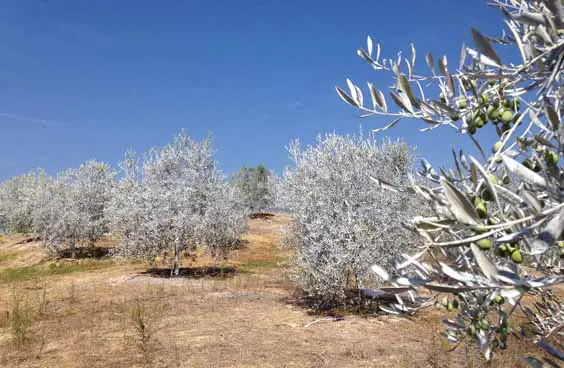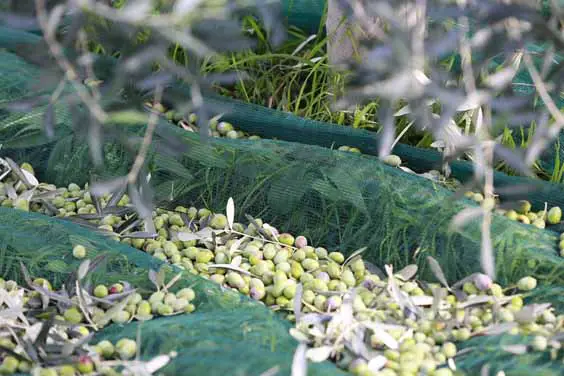Olive Oil – Understanding EVOO
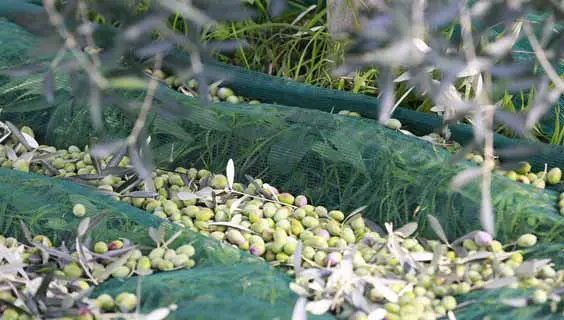
Losing My Extra-Virginity in Corsica
by Paul Howard
I love Extra-Virgin Olive Oil, (or EVOO for short). However, until recently I knew little about making it and less about how to taste it and how to choose a good one. As a foodie, losing my Extra-Virginity was overdue and I needed to find a perfect place to learn.
So I visited Domaine Oltremonti. It’s near Bastia, in northern Corsica, between the wild high Maquis and the coast. It’s an attractive setting amidst green hills covered with vineyards, oaks and poplars. Oltremonti is recognised as one of the best olive oil producers worldwide, winning gold medals in Paris, Madrid, Athens and Tokyo.
The cultivation of olive trees around the Mediterranean dates back to at least the 8th Century BC. Its popularity then spread around the Med from the middle-east. Olive trees are now found in similar climates worldwide, in the Americas, Australia, New Zealand and even Japan. There are some 1,350 different cultivars, and all have different flavours. The biggest production is from Italy, Spain and Greece. Most countries have outstanding examples – they may be just from a single variety of tree or a blend of cultivars.
These different varieties of trees and their terroirs mean that, like wine, there are many possible flavours, aromas and quality levels. The health benefits of using olive oil over other fats are also well known. The regulation of olive oil is by the International Olive Oil Council, who set grading and processing standards.
“Flavour and aromas of the prestigious oils are particularly distinctive”
Olive oil, like other vegetable oils, is a liquid fat. It has many uses besides cooking; in cosmetics, pharmaceuticals, engineering lubricants and fuel. Hence it is made in many grades, not all are fit for human consumption. However, the market value of EVOO, which is the finest grade for culinary use, means that there have been adulterous fraud scandals from time immemorial.
In Europe, EVOO is often also PDO (Protected Designation of Origin) as a guarantee of authenticity and purity, in a similar way to many wines and other foods.
The flavour and aromas of these prestigious oils are particularly distinctive, yet vary considerably. Hence choosing an EVOO can be similar to selecting wine.
Most olive oil is actually extracted in big industrial refineries, using chemical solvents, heat and high pressure. Not EVOO. EVOO is the premium, the Grand Cru, if you like, being pure unrefined juice. Small artisanal producers often make the best examples rather than the big brands.
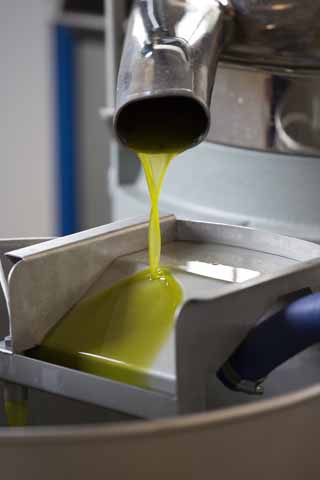 Olive Oil: How is it made?
Olive Oil: How is it made?
Let’s start with the olive trees. Each olive tree can produce between 10-40kg of olives each year, depending on its age, cultivar and method of farming. The olive is a stone fruit like a cherry. Though olive trees produce fruit every year, the tree naturally produces a larger harvest every two years.
In the northern hemisphere the trees flower in May. The harvest usually commences in early October as the olives ripen. Nets laid beneath the trees catch the fallers. It’s vital that there is no soil contact, as this increases the acidity in the olives and adds off-tastes. The best quality EVOO is hand-picked and often organic.
With EVOO, the olives now need to get to the mill as quickly as possible, before they oxidise and their acidity increases. Acidity in olive oil is the enemy of quality. Modern EVOO mills contain the latest technology. Forget the romantic image of old millstones powered by straw-hatted Donkeys. Indeed, grinding stones and presses have been largely superseded by specialised machinery. The old system could take weeks, whereas even a small modern mill can process 1,800kg per hour. Speed and mechanisation preserve flavour and consistency. It’s also much more efficient.
“It’s down to the Miller’s skill to decide on the optimal malaxing time”
Firstly, the olives need separating from any leaves or branches. Then, washing removes any other contaminants. After this a machine crushes the whole olives and their stones into a paste. The stones are beneficial because they contain anti-oxidants and make oil separation easier. This paste is then kneaded rather like a dough for 30-60 minutes in a process called malaxing. Malaxing collects all the droplets of oil together and lets natural olive enzymes add additional flavour.
Despite technology, it’s down to the Miller’s skill to decide on the optimal malaxing time. It’s a balancing act, as the Miller needs to get a generous amount of oil while retaining flavour without oxidation. Unlike wine, there are no anti-oxidants such as sulphur added to EVOO.
Now, the paste is centrifuged, which separates out the oil. 20% is EVOO, and 80% is a “waste” of stones and fruit pulp. The waste goes to lower grade oils used for canned food or cosmetics such as soap.
“Some bottles of EVOO will contain a sediment”
The EVOO extraction never uses heat, chemicals or water, and it’s important to keep the process temperature below 25°C. Light, heat and oxygen all degrade the oil, by increasing acidity and losing subtle aromas.
The new EVOO is stored in stainless steel tanks. Temperature control and a blanket of carbon dioxide prevent oxidation. After 40 days, most remaining particles in the oil will have fallen to the bottom of the tank. Some bottles of EVOO will contain a sediment, others are filtered, as some markets think sediment is a sign of higher quality but in reality there shouldn’t be much difference in the taste.
The higher the acidity, the more quickly the oil will degrade, both during the process and in subsequent keeping. EVOO by law must have a maximum acidity of 0.8%. The best has far less. For example, Oltremonti’s acidity is just 0.2%.
Olive Oil: Tasting and buying tips
The proof of any good EVOO is in the tasting. The tasting methodology is rigorous, with official descriptions and a list of faults. In that sense, it resembles wine judging.
However, the colour and texture aren’t part of the assessment and official tasting is from a cobalt-blue container to mask the colour, which ranges from yellow through to dark green. EVOO tasting has 1-10 scales for intensity, bitterness and pungency. 1.0 to 3.5 is light, over 3.5 to 6.0 is medium, and 6.0 to 10.0 is intense.
If this sounds complicated, then, just like wine, it takes only a short time for anyone to pick up the tasting basics. But then years of practice are needed to become a skilled judge! What is important is that you try several before you buy and choose an EVOO you like.
Like wine, a dominant flavour doesn’t necessarily mean better. Instead, you should choose your EVOO according to what you will use it for.
“Unlike wine, maturity in Olive Oil is never a good thing”
I learned that a chef will always have three oils to hand; a light one for fish, baking and pesto, a medium oil for salad dressings, pasta and white meats and an intenser oil for red meats and finishing dishes such as soups, stews, risotto and paella.
Because labels don’t often indicate the flavours and qualities of an individual EVOO, look for bottles with a date indicating when it was made, to ensure its still fresh. If it has a PDO label then so much the better.
The label should state the acidity – the lower the better. Low acidity ensures the oil will have an optimal shelf-life in a sealed bottle of around 12-18 months before it starts to degrade. Once opened, it remains fresh for 2-3 months. Unlike wine, maturity in Olive Oil is never a good thing!
Buy small bottles and then use them quickly after opening. Unlike wine, maturity in Olive Oil is never, ever, a good thing.
Following these tips should mean that you get a good quality genuine Extra-Virgin Olive Oil that suits the type of cooking you do and your own tastes.
For me, a little more knowledge about olive oil has opened up a whole new world of taste to explore too!
